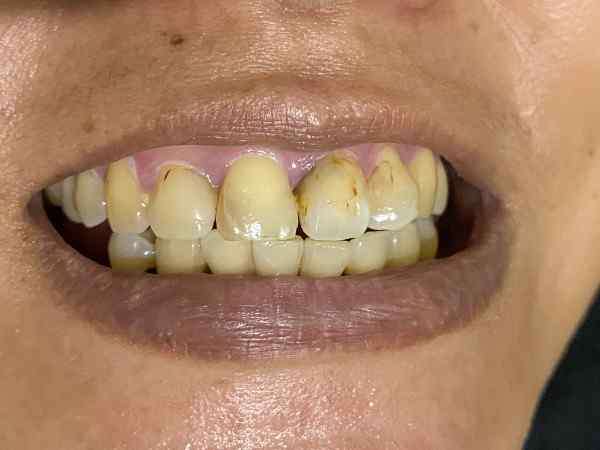A smile is often one of the first things people notice, and having bright, healthy-looking teeth can make a lasting impression. It conveys confidence, vitality, and good oral hygiene, which are valued both socially and professionally. With today’s increasing focus on personal appearance, teeth whitening has become one of the most sought-after cosmetic dental treatments worldwide. However, before opting for any whitening procedure, it is important to understand how these treatments work, the potential risks involved, and what results you can realistically expect. This blog covers all the essential details about whitening methods, potential risks, and their outcomes, helping you make a well-informed choice.
Why Teeth Discolour
Teeth naturally darken and lose their sparkle over time due to a combination of biological, lifestyle, and environmental factors. Recognising these causes is the first step towards choosing the most effective whitening treatment.
Common reasons for tooth discolouration include:
- Dietary choices: Regular consumption of coffee, tea, red wine, berries, and dark sauces can stain enamel.
- Tobacco use: Smoking or chewing tobacco leads to yellow or brownish stains due to nicotine and tar.
- Ageing: With age, enamel thins, exposing the naturally yellow dentin underneath.
- Medications: Certain antibiotics, antihistamines, and chemotherapy drugs may alter tooth colour.
- Genetics: Some individuals are naturally predisposed to darker or more porous enamel.

Quick Reference Table: Causes and Stain Types
Cause | Stain Type |
Coffee, tea, wine | Extrinsic (surface) |
Tobacco use | Extrinsic |
Ageing | Intrinsic (within teeth) |
Medications | Intrinsic |
Trauma/illness | Intrinsic |
Understanding whether staining is intrinsic or extrinsic is vital, as it influences which whitening method will yield the best results.
Teeth Whitening Techniques
There are multiple ways to brighten teeth, from advanced dental procedures to simple at-home solutions. Each option comes with its own set of benefits and limitations.
1. In-Office Whitening
Professional treatments performed under dental supervision deliver the fastest and most dramatic results. High-concentration bleaching agents, sometimes activated by special lights or lasers, are applied directly to the teeth.
Advantages:
- Immediate, noticeable results
- Supervised by professionals for safety
- Suitable for severe discolouration
Disadvantages:
- Higher cost compared to home methods
- May cause temporary tooth sensitivity
Many patients choose professional whitening before important life events such as weddings, photoshoots, or interviews. Visiting a qualified Dentist in Sudbury ensures safe, reliable outcomes tailored to your individual dental needs.
2. At-Home Whitening Kits
Dentist-prescribed or over the counter kits provide a more gradual whitening process. These usually include trays or strips coated with bleaching gels.
Advantages:
- Convenient to use at home
- Gradual whitening, lowering sensitivity risks
- Less costly than professional in-office options
Disadvantages:
- Results take longer (weeks rather than hours)
- Less effective on deeper or intrinsic stains
- Consistency and correct usage are essential
Tips for Success:
- Always follow product or dentist instructions.
- Avoid overuse, which may damage enamel.
- Combine with good oral hygiene practices for lasting results.
3. Whitening Toothpaste and Mouthwash
These products are designed mainly to combat surface stains. They contain mild abrasives or low-strength bleaching agents.
Advantages:
- Easy to incorporate into daily routines
- Affordable option
- Useful for maintaining professional whitening results
Disadvantages:
- Limited effect on deep stains
- Results are subtle and slower to appear
4. Natural and Home Remedies
Remedies such as baking soda, activated charcoal, and oil pulling are sometimes promoted as whitening alternatives. However, scientific evidence supporting their effectiveness is limited. Excessive or incorrect use can cause enamel erosion, so they should be approached with caution.
Risks and Side Effects
Although generally safe, whitening procedures are not without risks. Being aware of potential side effects allows patients to make better-informed choices.
Common risks include:
- Tooth sensitivity: A temporary increase in sensitivity to hot or cold foods is common, particularly after professional bleaching.
- Gum irritation: If whitening agents come into contact with gums, irritation or mild burns may occur.
- Enamel weakening: Overuse or misuse of whitening products can wear down enamel, leaving teeth vulnerable to further staining or decay.
Reducing risks:
- Consult a qualified dental professional before beginning treatment.
- Use desensitising toothpaste before and after whitening.
- Avoid acidic foods and drinks immediately following treatment.
Seeking advice from an experienced Dentist in Sudbury helps ensure treatments are not only effective but also safe for long-term oral health.
Expected Results and Longevity
The effectiveness of whitening treatments depends heavily on the chosen method and a patient’s lifestyle.
Method | Effectiveness | Cost | Time to Results | Longevity |
In-Office Whitening | High | Higher | Immediate | 6–24 months |
At-Home Whitening Kits | Moderate | Moderate | 1–4 weeks | Several months |
Whitening Toothpaste/Rinse | Low | Low | Several weeks | Maintenance only |
Lifestyle habits such as smoking or frequent coffee consumption may reduce the longevity of results, whereas good oral hygiene and periodic touch-ups can extend them.
Tips for Maintaining a Whiter Smile
Long-lasting results require ongoing care. Combining whitening treatments with healthy habits ensures a bright, confident smile over time.
Effective practices include:
- Brush and floss daily to prevent new stains.
- Limit consumption of stain-causing drinks like tea, coffee, and red wine.
- Rinse with water after meals and drinks.
- Schedule regular dental cleanings for deep stain removal.
- Consider occasional professional touch-ups for enhanced longevity.
Integrating these steps into your routine ensures that the effects of treatments such as Teeth whitening Sudbury last longer and remain effective.
Additional Considerations: When to Seek Professional Guidance
Not all whitening methods are suitable for everyone. Some situations require professional assessment before attempting treatment.
Seek advice if you have:
- Persistent or severe discolouration unresponsive to whitening products
- A history of gum disease or sensitive teeth
- A desire for long-lasting, dramatic results
Asking questions such as “Which method suits me best?” or “How often should I repeat whitening?” ensures a tailored, safe approach. Consulting professionals offering Teeth whitening Sudbury provides reassurance and treatment suited to individual dental profiles.

Conclusion
Teeth whitening continues to be one of the most effective and popular ways to enhance the appearance of your smile. With options ranging from in-office treatments to at-home kits and daily-use products, there is a solution for nearly everyone. However, understanding the causes of discolouration, the risks involved, and the expected outcomes is key to making the right decision. Combining professional supervision with good oral hygiene and lifestyle adjustments ensures results that are both safe and long-lasting. Rely on the expertise and professionalism available in Sudbury for trusted guidance and quality care that values both your oral health and your smile’s appearance.







